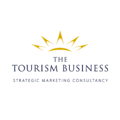The Pandemic Marketing Series: Flattening the seasonal curve

Seasonal marketing has a lot to answer for. In fact, I’d argue the spring, summer, autumn and winter milestones that have guided our industry’s marketing efforts for years have become millstones around our necks. To the point of hindering travel and tourism businesses from becoming more resilient and financially secure. And with changes in consumer behaviour and the industry in recovery mode, I think now is the perfect time to try a different approach.
As long as I’ve been in the travel and tourism industry, seasonality has been both its biggest driver and its toughest challenge. It’s always jarred with me how the industry has slavishly followed this cycle of peaks and troughs, of feast and famine, of highs and lows – no matter which part of the industry we’re looking at.
I’m not saying let’s ditch seasonal marketing altogether, just that we need to find new and creative ways to flatten the peaks and troughs that invariably accompany it. Because when you get down in the weeds and examine it closely, it’s not good for business (feast and famine revenue), for visitors (big crowds often mean a dip in service) or staff resourcing (scarcity in peak season). And it’s certainly not good for anyone’s mental health.
The silly season
Working with people from across the industry, I often hear how ragged they’re run during the busy months and have little time or energy to plan for the off-season. Many also admit that trying a different approach feels too risky. But I think continuing in the same vein year after year presents an even bigger risk. Why? Because consumer behaviour is changing and this might very well affect the seasonal peaks and troughs for the coming year, at least. And here’s why.
There's unseasonal weather ahead
Our industry gets excited about Christmas and puts a lot of effort into Xmas campaigns. But I think this Christmas is going to be different because after last year’s restrictions, many of us will be looking to spend more time with loved ones. So the typical boost you might expect during Twixmas is likely to be below average.
And what about next summer? Well, with the vast majority of people in the UK and Europe double (or treble) vaccinated, along with other parts of the world, and hopefully international travel being well and truly open, I have a hunch foreign holidays will rebound spectacularly. This summer’s poor weather – always cited as a major factor in people’s holiday destination choices – hasn’t done domestic tourism any favours either. Add in the exceptionally large crowds (with nowhere else to go, but the UK) and it solidifies in people’s minds why they prefer to jet off abroad.
It also explains why we've seen people switching their UK holidays to near-continent visits to countries on the ‘green list’, like Malta. Or even to countries on the ‘amber list’ like France and Spain where the weather’s more reliable. I think this ‘run to the sun’ will be even more pronounced next summer.
Flattening the curve
So, if Christmas and next summer are likely to be below par, now is the time to really start thinking about switching to a non-seasonal approach and instead adopting an ‘always-on’ approach to marketing. But what does that look like?
In simplistic terms, it means diversifying the audiences you typically market to throughout the year to include perhaps less familiar ones who might take advantage of what you have to offer. Let's be honest, the only reason we have to pay a lot of attention to seasonality is because it’s structured around school holidays. So, understandably, most businesses are thinking “What's our half-term campaign?”, “What's our Easter campaign?”, “What's our summer campaign?”, “What’s our May Bank Holiday campaign?”.
Of course, the family audience is a huge chunk of revenue, so you can’t ignore it altogether, but you can break down the traditional marketing calendar to ask, "What would happen if we focused as heavily on other audiences as we do on the family audience to fill the gaps in our marketing calendar?".
A captive audience
When you think about it, the family audience is a captive one already. During those holiday periods, they're already looking for things to do, so you’re preaching to the converted. It won’t take much marketing to stay front of mind and bring them in. I’m saying let’s switch the attention to the quieter times of year and invest our marketing efforts heavily to January to March, from September to October, and from Tuesdays to Thursdays. There’s less competition for awareness and exposure at these times, too, so your marketing has more opportunity to stand out.
If I were a betting man, I think the most successful businesses over the next year will be the ones that do this. That say, "Let’s weight our marketing activities and budgets on the gaps in our calendar and invest heavily in increasing visitor volumes to fill them."
Making time, taking time
There are plenty of ways to do this if you make time to plan and execute a solid strategy. Yes, it can be hard to find the energy when you spend your life chasing your tail to hit the same old sales targets each year. But what’s become abundantly clear is that there’s a new-found appreciation of the work-life balance across society that wasn’t evident pre-pandemic. More than ever, people are looking to do things on their own terms, and at times that suit them – and I think many of these changes in behaviour will become the norm, like hybrid working is. So cater to them and create compelling propositions to draw them in.
For example, people are valuing ‘experiences’ and microbreaks even more now than they did before lockdown. Young professionals and empty nesters recognise the benefits of a three-day, mid-week, off-peak getaway that’s quieter and more affordable or indeed a holiday in the off-peak months. A three-day stay at a gorgeous spa hotel in the Lake District in January, or a trip to southern Spain in March, is infinitely more appealing than navigating the full-on family crowd over Easter or summer.
Flicking the switch to 'always-on'
If businesses have the will, they can find ways to move beyond seasonality and its peaks and troughs to a more always-on, year-round marketing focus. What that requires is switching resources and budgets away from marketing to family audiences to fill occupancy or visitor numbers in peak times, to marketing to less-familiar audiences, thereby generating occupancy or visitor numbers during off-peak times. Get it right (and we can show you how) and you’ll achieve a more resilient, secure, business with a more even spread of guests, visitors or customers throughout the year – all with a lot less stress.
Making it happen
We know it can be done, because we’ve done it for Visit Eastbourne with great success. And if there was ever an opportunity to try doing things differently, or at the very least, think about it, then surely it’s now. Yes, it does require courage to buck convention, defy consensus, and tread a different path, but as I mentioned in my previous blog, our industry has had to change so much already, what have you got to lose?
In part three…
For my next article in this series, I’ll be looking at how changes in consumer behaviour and expectations are providing travel and tourism businesses with a real opportunity to reinvent the way they do things, and to reshape their brand to better reflect their future ambitions.
See you then…
For a more in-depth read…download An Industry Renewed: how travel and tourism businesses can thrive in 2021 and beyond.
Anthony Rawlins is the Founder and CEO of Digital Visitor with over 15 years experience in crafting successful marketing strategies for the travel and tourism businesses. He has worked with leading organisations in every part of the industry including airlines, cruiselines, global hotel chains, destinations and attractions. Regarded as a visionary by many industry leaders, through his scientific background, data interpretation expertise and proclivity for creativity, he has a proven track record in accurately predicting future trends. Combined with expansive industry knowledge and pragmatic and commercial mindset he’s has been able to effectively translate these trends into actional strategies and tactics for Digital Visitor’s clients.










